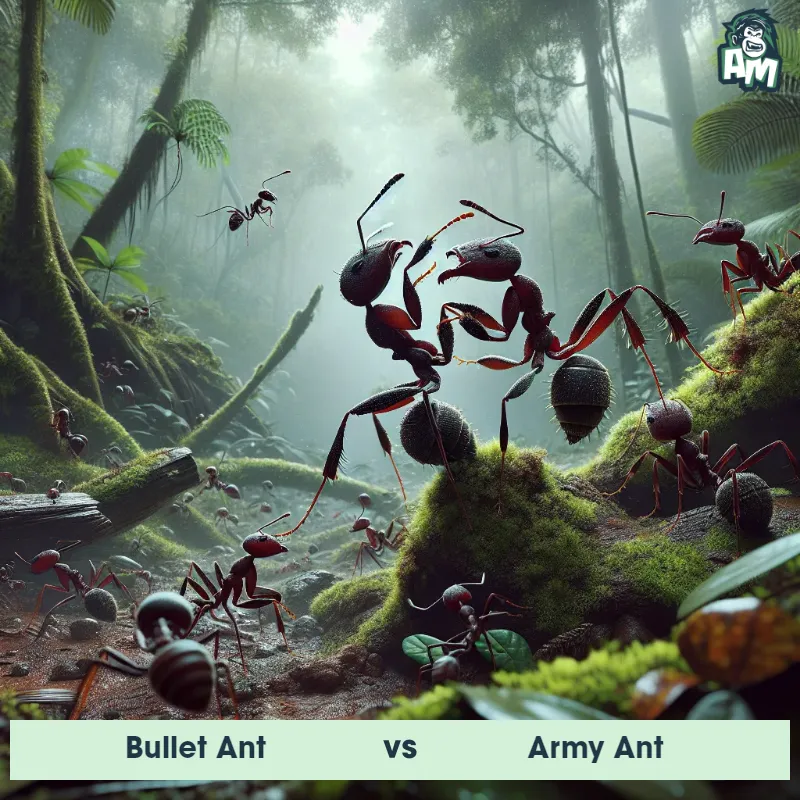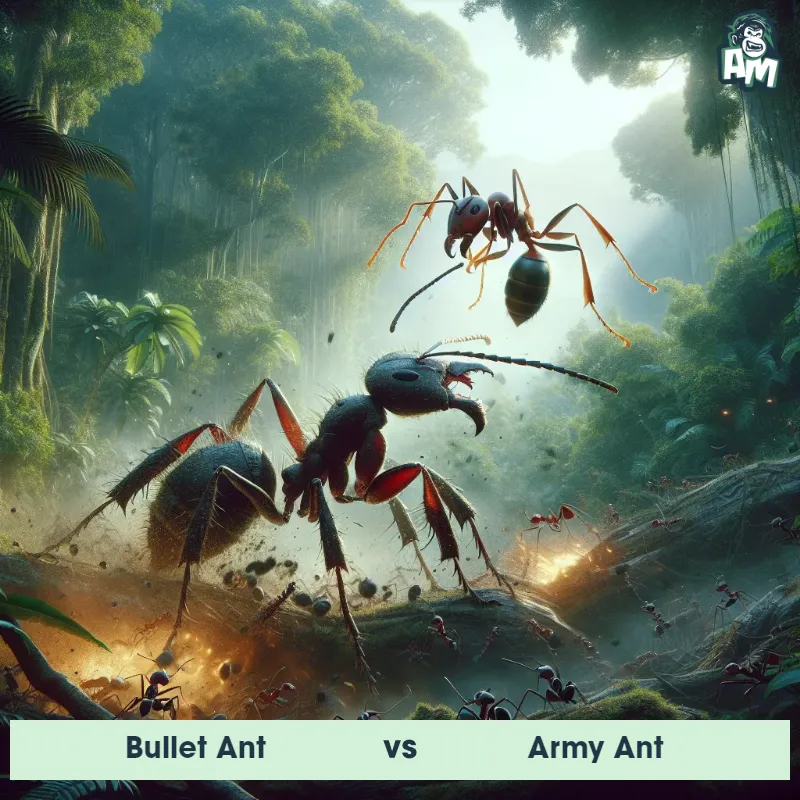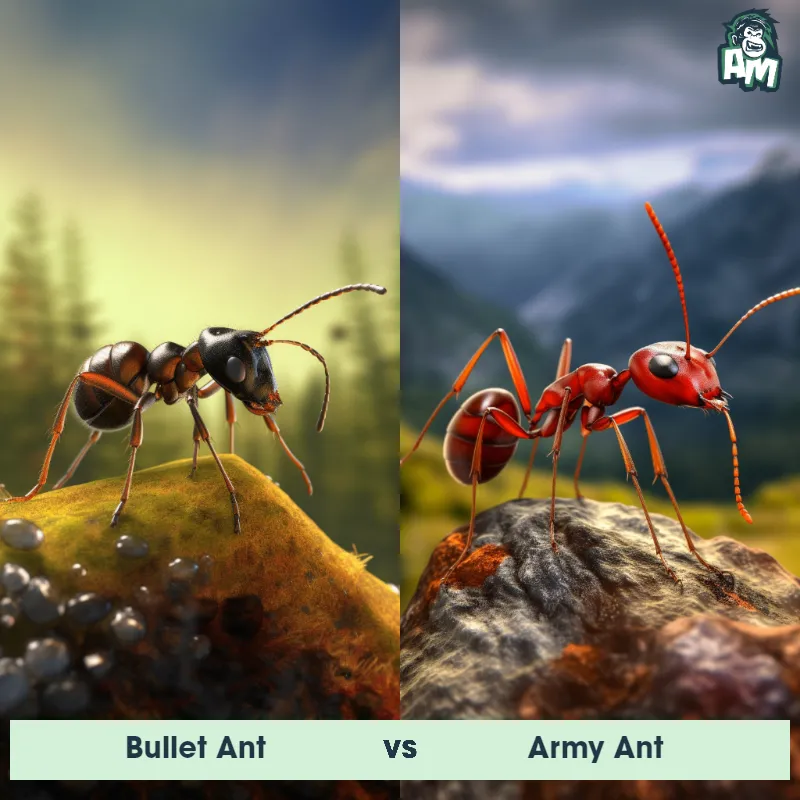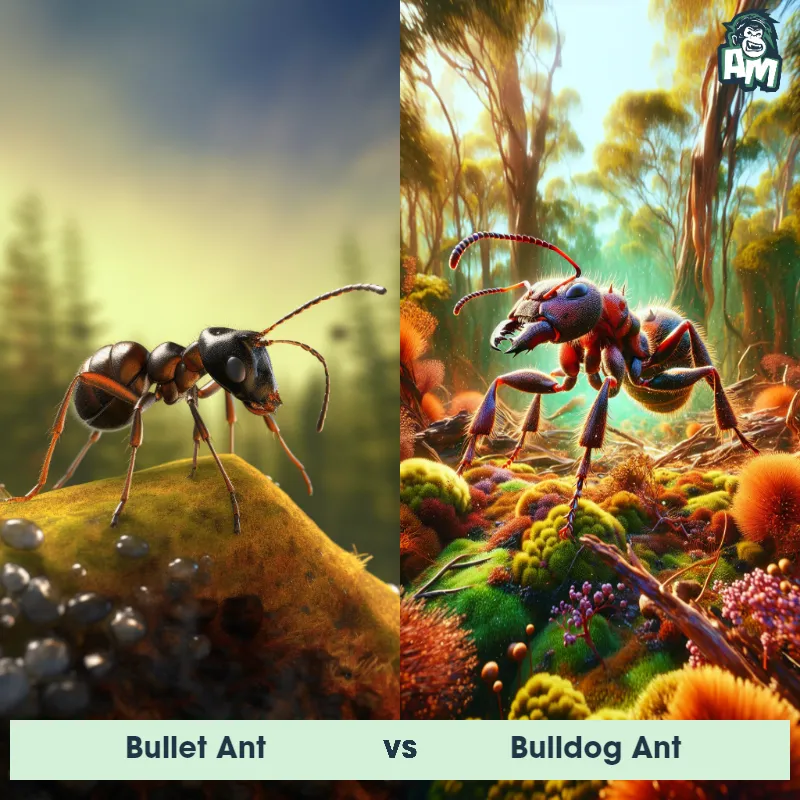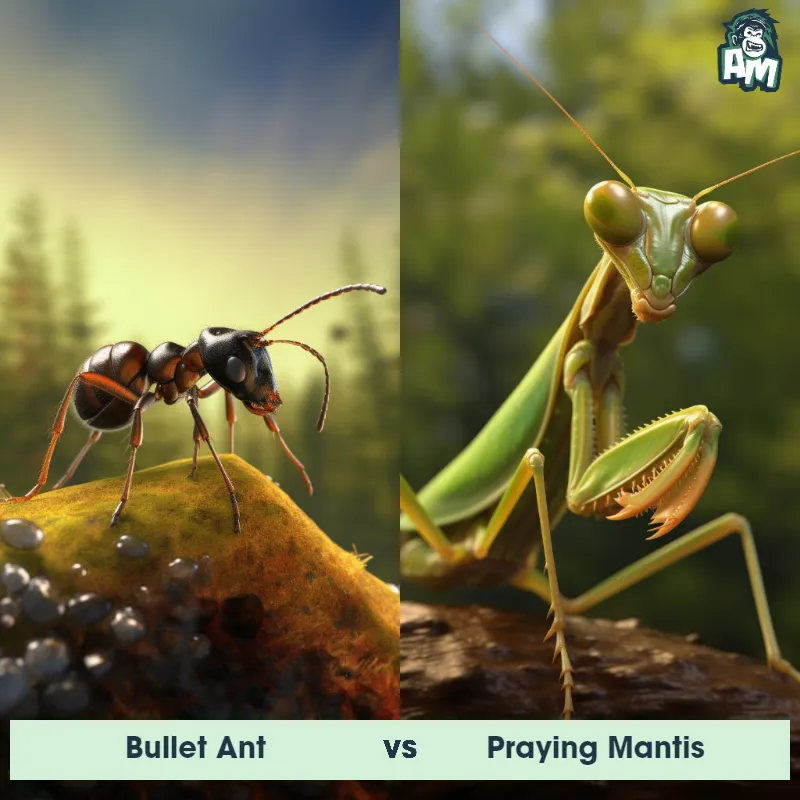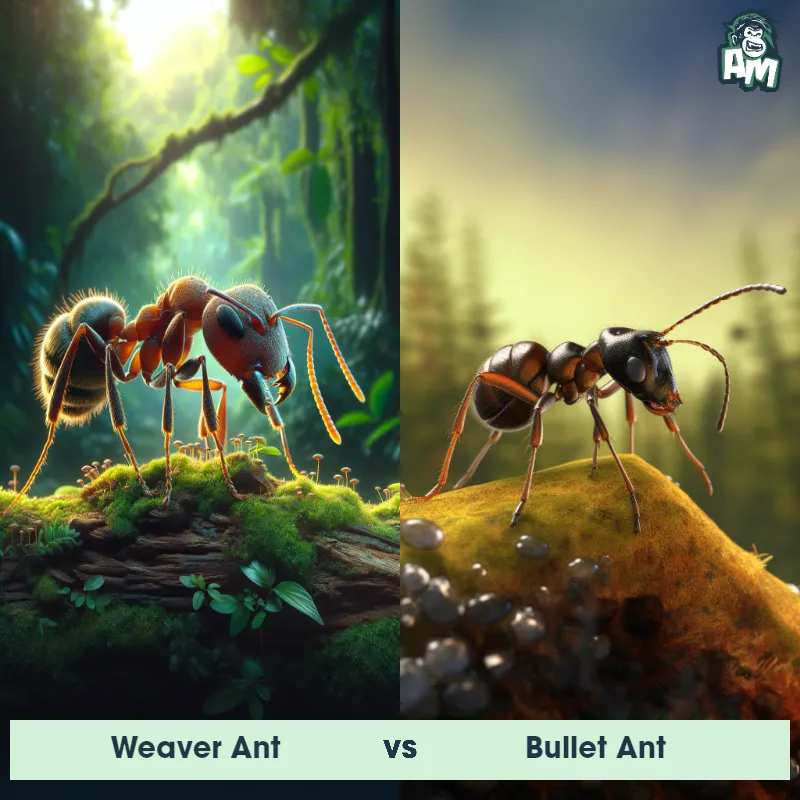The Bullet Ant
The Bullet Ant, also known as Paraponera clavata, is a large and highly venomous ant species found primarily in the rainforests of Central and South America. It is known for its distinct appearance, characterized by its shiny black exoskeleton and a long, slender body measuring approximately 1 inch in length. The Bullet Ant gets its common name from the intensity of its sting, which is said to be as painful as being shot by a bullet. This ant species is known for its aggressive nature and for building large colonies, often consisting of thousands of individuals.
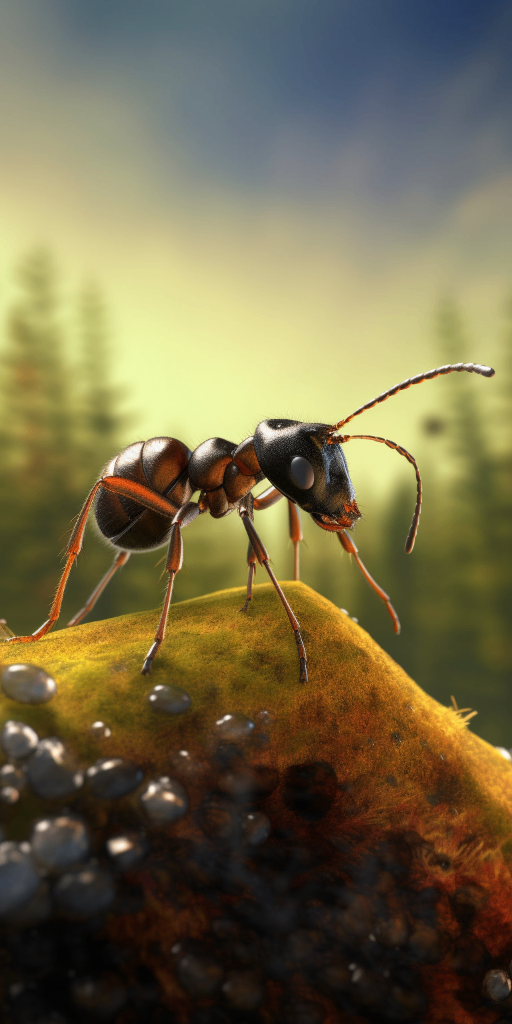
| Bullet Ant | |
|---|---|
| Size | Up to 2.5 cm (1 inch) in length (25 mm) |
| Weight | 4.5 g (0.16 oz) (average worker ant) |
| Speed | NA |
| Key Strength | Powerful mandibles for capturing prey and defending colony |
| Biggest Weakness | None |
| Scientific Name | Paraponera clavata |
| Family | Formicidae |
| Habitat | Forest floors |
| Geography | Central and South America |
| Diet | Insects, nectar, and fruit |
| Lifespan | 1 year - 2 years |

The Bullet Ant
The Bullet Ant, also known as Paraponera clavata, is a large and highly venomous ant species found primarily in the rainforests of Central and South America. It is known for its distinct appearance, characterized by its shiny black exoskeleton and a long, slender body measuring approximately 1 inch in length. The Bullet Ant gets its common name from the intensity of its sting, which is said to be as painful as being shot by a bullet. This ant species is known for its aggressive nature and for building large colonies, often consisting of thousands of individuals.
Fun Fact: The Bullet Ant has one of the most painful stings in the insect world, with its venom causing intense pain that can last for up to 24 hours.
| Bullet Ant | |
|---|---|
| Size | Up to 2.5 cm (1 inch) in length (25 mm) |
| Weight | 4.5 g (0.16 oz) (average worker ant) |
| Speed | NA |
| Key Strength | Powerful mandibles for capturing prey and defending colony |
| Biggest Weakness | None |
| Scientific Name | Paraponera clavata |
| Family | Formicidae |
| Habitat | Forest floors |
| Geography | Central and South America |
| Diet | Insects, nectar, and fruit |
| Lifespan | 1 year - 2 years |
Match Highlights
Bullet Ant Matchups
We use AI to simulate matchups between the Bullet Ant and other animals. Our simulation considers size, strength, and natural predatory behaviors to determine the most likely outcome.
Bullet Ant: Diet, Predators, Aggression, and Defensive Behaviors
What do Bullet Ants eat?
Bullet Ants are omnivorous insects, meaning they consume both plant matter and other small creatures. Their diet mainly consists of nectar, fruit juices, and other sugary liquids. However, they'll also hunt and feed on small insects, spiders, and even other ants.
Do Bullet Ants have any predators?
Despite their painful sting, Bullet Ants do have predators in the wild. Some of their natural enemies include insect-eating birds, large spiders, and certain species of anteaters. Additionally, some parasitic wasps are known to prey on Bullet Ant colonies.
Are Bullet Ants aggressive?
Bullet Ants are considered to be one of the most aggressive species of ants. They exhibit territorial behavior and will vigorously defend their nests from intruders. When threatened, they will use their potent sting as a means of defense.
Do Bullet Ants fight?
Bullet Ants are not known for engaging in direct physical fights with one another. Instead, they rely on their strong jaws and stingers to fend off adversaries. However, they may engage in aggressive interactions with rival ant colonies over territory.
How do Bullet Ants defend themselves?
The primary defense mechanism of Bullet Ants is their powerful sting, which delivers a potent venom causing intense pain to potential threats. They will swarm and attack intruders en masse if their nest is disturbed, inflicting pain and discouraging further interference.
What is the biggest weakness of Bullet Ants in a fight?
Despite their formidable stingers and aggressive nature, Bullet Ants have a vulnerability when faced with larger predators or adversaries. Their individual size and strength can be outweighed by larger insects or animals, leaving them susceptible to being overpowered in a physical confrontation.
Fun Fact: Bullet Ant workers are known for their incredible strength, as they are capable of carrying objects that are up to 100 times their own body weight.
Fun Fact: During the ritual of ant initiation among some indigenous Amazon tribes, young boys have to wear gloves filled with Bullet Ants and withstand the stinging pain for several minutes as a rite of passage to manhood. This ceremony is considered one of the most painful ordeals in the world.




